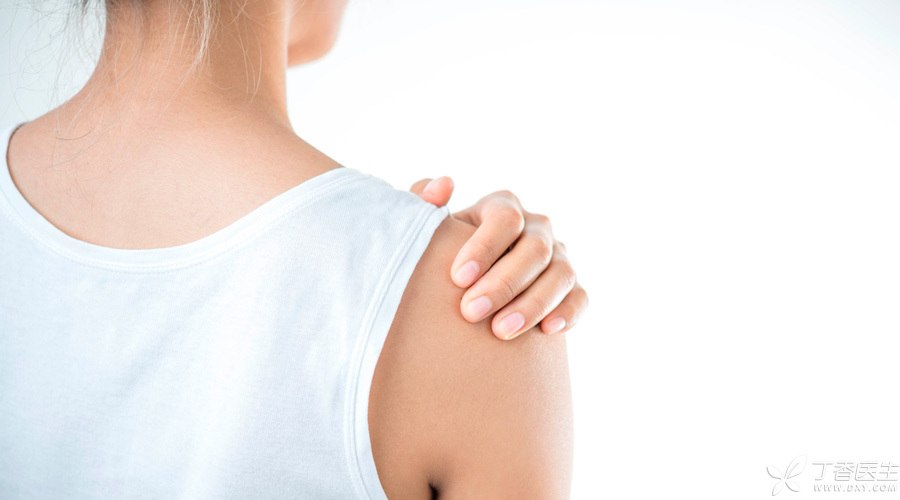
If the human body is a machine, to allow segments of bones to move freely, you need [bearings], which are joints. To make the bearings work smoothly, you need lubricating fluid, wear-resistant materials and support systems.
And our joints have gradually perfected into a [wear-resistant and lubricating stable bearing].
Sun Yueli, a teacher from the Department of Biomedical Engineering at the State University of New York at Stony Brook, will come to talk about the composition of joints.
After listening to his explanation, I believe you will have a deeper understanding of how to maintain joints.
Triple safety of joints
The triple safety of the joint corresponds to lubricating fluid, wear-resistant material and support system respectively.
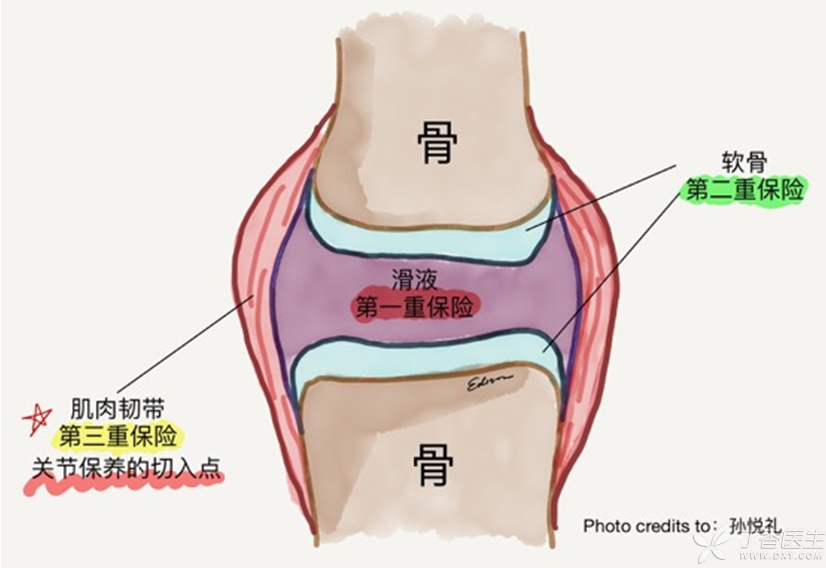
1. Joint synovial fluid
The synovial fluid filled in the joint capsule, as the first safety, can play a buffering role.
As one grows older, external impact is too great or diseases occur, synovial fluid in joint capsules will be consumed, and bone surfaces will have to collide with each other. At this time, the second insurance will come into play.
2. Cartilage
Cartilage on the joint surface can make bone collisions become [soft landing] and reduce impact.
However, as friction accumulates, cartilage will be worn thinner and thinner or even completely polished.
Then the third insurance is even more important at this time.
3. Joint ligaments and muscles
In order to keep the joints stable enough when they are still and moving, to reduce the burden on synovial fluid [hydraulic system] and cartilage [buffer pad], ligaments and muscles cooperate with each other to form the third safety.
In the [triple insurance] of joints, the functions of the first two will be weakened with age, synovial fluid will be less and less, and cartilage will be thinner and thinner.
In order to maintain joint activity function for as long as possible, we need to find ways to maintain the stability of muscles and ligaments.
Next, I will share with you how to start with [the third insurance] and maintain the joints of all parts of our body according to several different joint types.
Shoulders and hips, pounding pestle and mortar
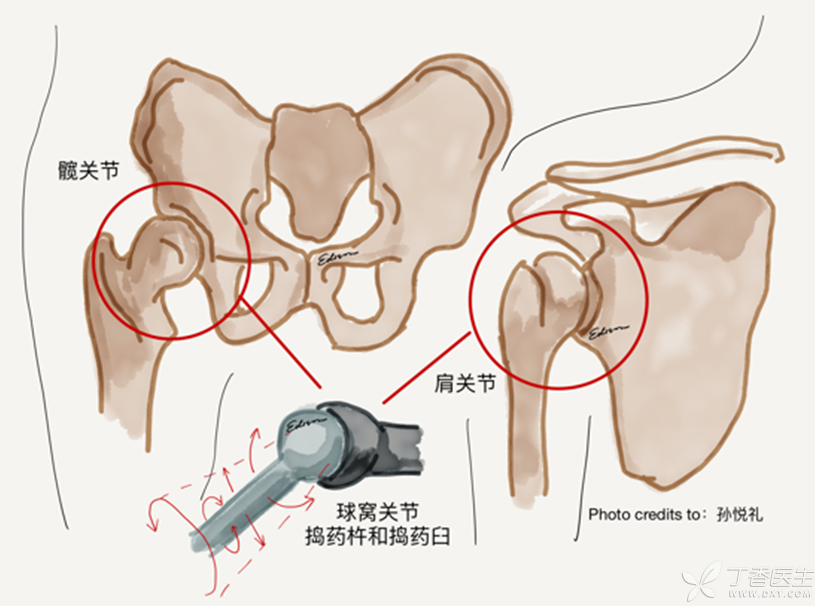
The structure of the shoulder joint and hip joint is like a pounding pestle placed in a mortar of the same size. The humerus of the upper arm and the femur of the thigh are [pounding pestle], and the articular surface of the scapula and pelvic ilium is [mortar].
When your arms hang down naturally and stand quietly, as long as the shoulder joint and hip joint are aligned and the surrounding ligaments are tightened, you can maintain stability very easily.
When the arms are swung up and the steps are stepped up, more muscles are mobilized, so that the joints can maintain a certain balance during various activities and the pressure in the joint cavity is relatively small.
Humpback and pelvic tilt forward will accelerate the wear of these two joints.
This kind of people often hear the sound of joint [clicking] when lifting their arms and legs, which leads to insufficient strength of muscle groups around the joint, excessive pressure in the joint cavity during the movement, and the elastic sound caused by squeezing and pulling the intra-joint structure.
In daily life, in addition to paying attention to holding out one’s chest and standing up straight, one can also strengthen the strength of relevant muscles and stabilize joints through the following two actions.
Shoulder joint: The back is against the wall, the arms are straight and raised horizontally on the side, the palms are slightly raised 15 degrees outward and upward, and then slowly return to the initial position.
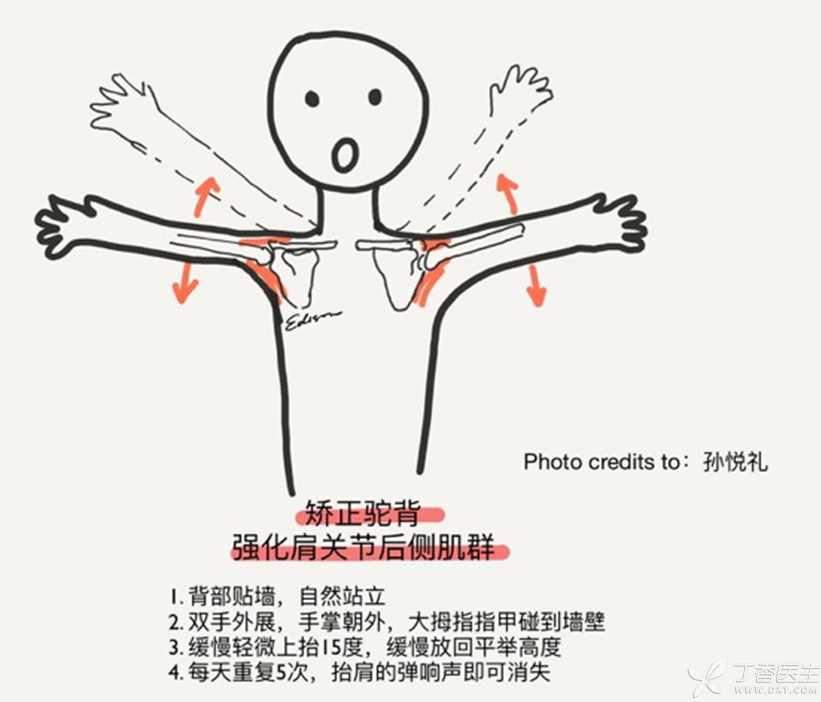
Hip joint: Bend one knee, place it on a small stool, move the knee forward, slowly bend over and bend over, stretch the muscles on the back of the thigh.
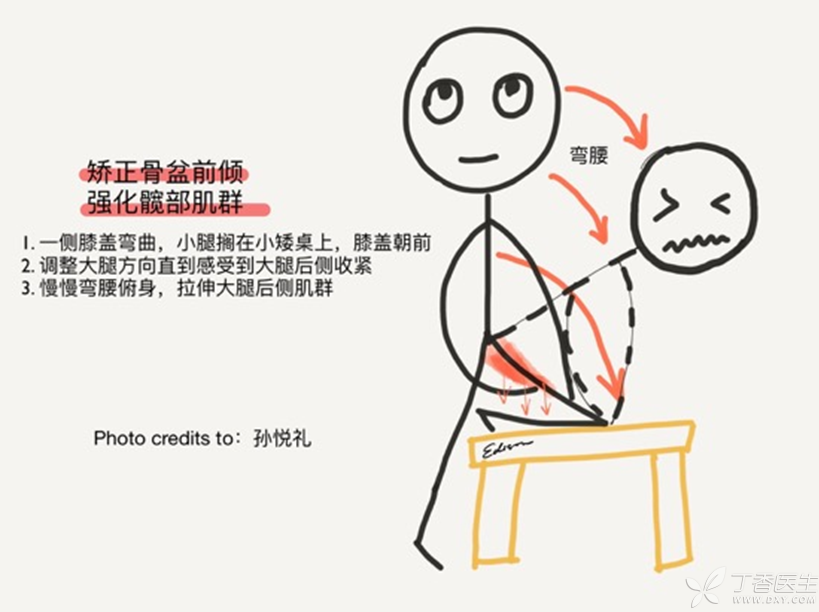
Knees, elbows and ankles, hinges for opening and closing doors.
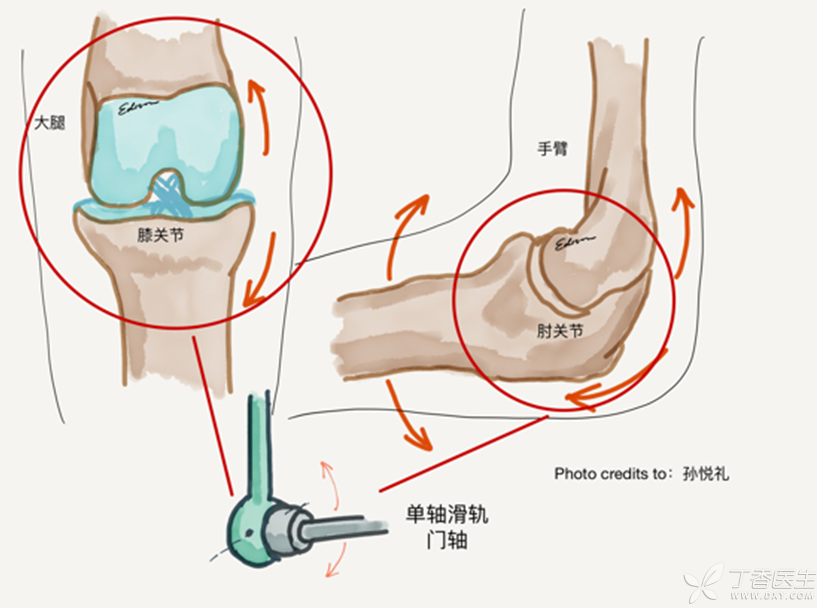
Knee joints, elbow joints and ankle joints are like door shafts and hinges.
The flexion or extension of a joint mainly in a single direction.
Compared with shoulder joint and hip joint, the stability of these [hinge joints] is slightly greater than flexibility.
Because the lower limb joints need to bear the weight of the whole body, the knee joint and ankle joint are relatively more prone to trauma than the elbow joint. Therefore, the maintenance of the knee joint and the strengthening of the ligament strength at the ankle joint are even more important.
Joint maintenance can be carried out according to the method shown in the following picture.
Knee joint: Keep your back straight against the wall with your feet open and take one step forward. Open your knees and sit down with your upper body against the wall. Hold it for 30 seconds when your knees bend to 90 degrees.
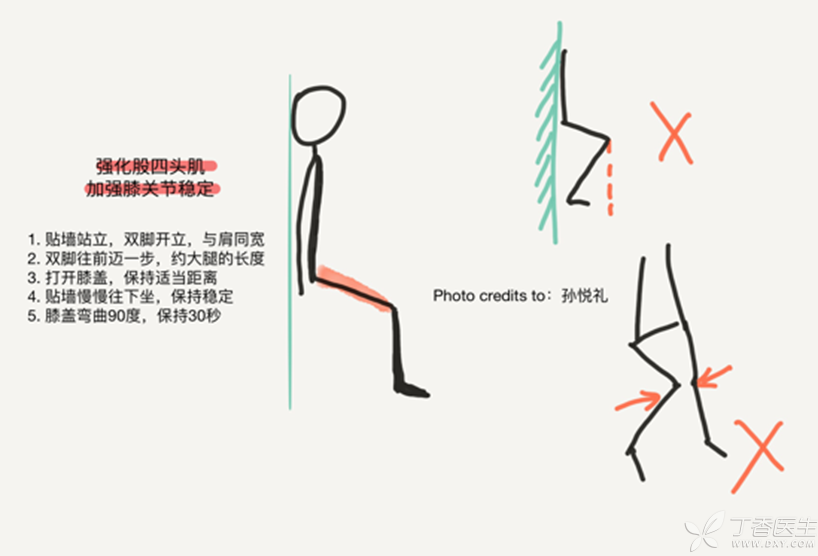
Cervical and lumbar vertebrae, stone mills and baffles
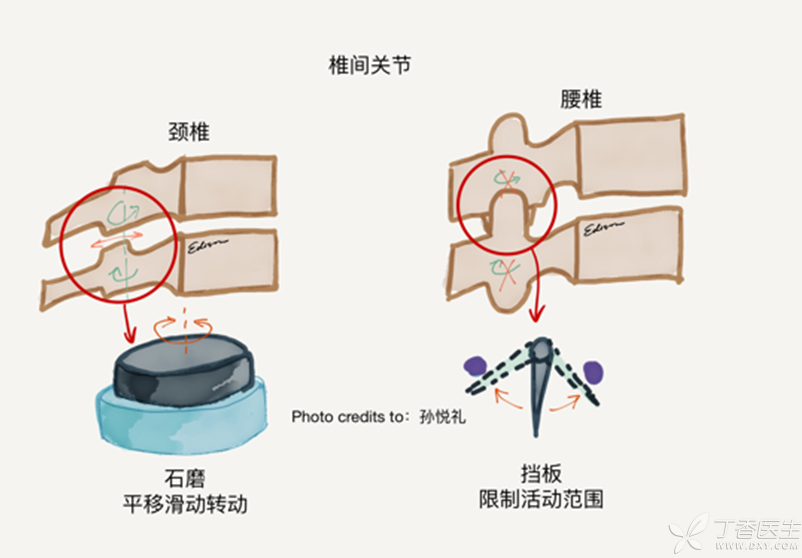
In addition to the anterior intervertebral disc, there are two intervertebral joints connecting the upper and lower vertebral bodies on both sides of the posterior side of the vertebral body, forming a [three-column system].
Cervical vertebrae, shaped like a stone mill, can not only prevent the vertebral bodies from shifting, but also allow the vertebral bodies to rotate fully.
The lumbar spine is similar to a baffle that limits the range of motion.
Cervical spine should be flexible, while lumbar spine needs to bear weight. Therefore, such intervertebral joint structure can better reduce the risk of lumbar spondylolisthesis and sprain.
Because the structure of the intervertebral disc can be buffered to a large extent, so the stress of the vertebral body is mainly concentrated in the intervertebral joints on both sides, and neck pain and lumbago are indeed mostly manifested on both sides of the corresponding segments of the spine. Hyperosteogeny near intervertebral joints will cause symptoms such as hand numbness and foot numbness due to compression to nearby nerves.
In order to fully decompress the intervertebral joints, the muscle groups on both sides of the spine need to be fully stretched and strengthened.
Spine: Heel, buttocks, shoulders, back of head against the wall, stand on tiptoe, hands in the air, arms against the wall, hold for 30 seconds.
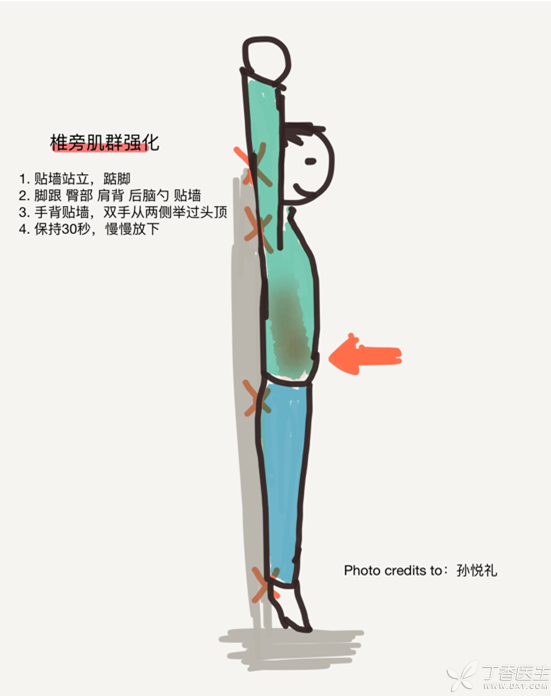
To sum up, although the overall structure of joints is the same, the maintenance methods of joints in different parts are different due to the differences in range of motion and load-bearing load.
However, there is only one principle that will remain unchanged, that is, to strengthen the strength of muscles and ligaments around joints, to keep joints that need flexibility flexible, and to make joints that need stability more stable.
